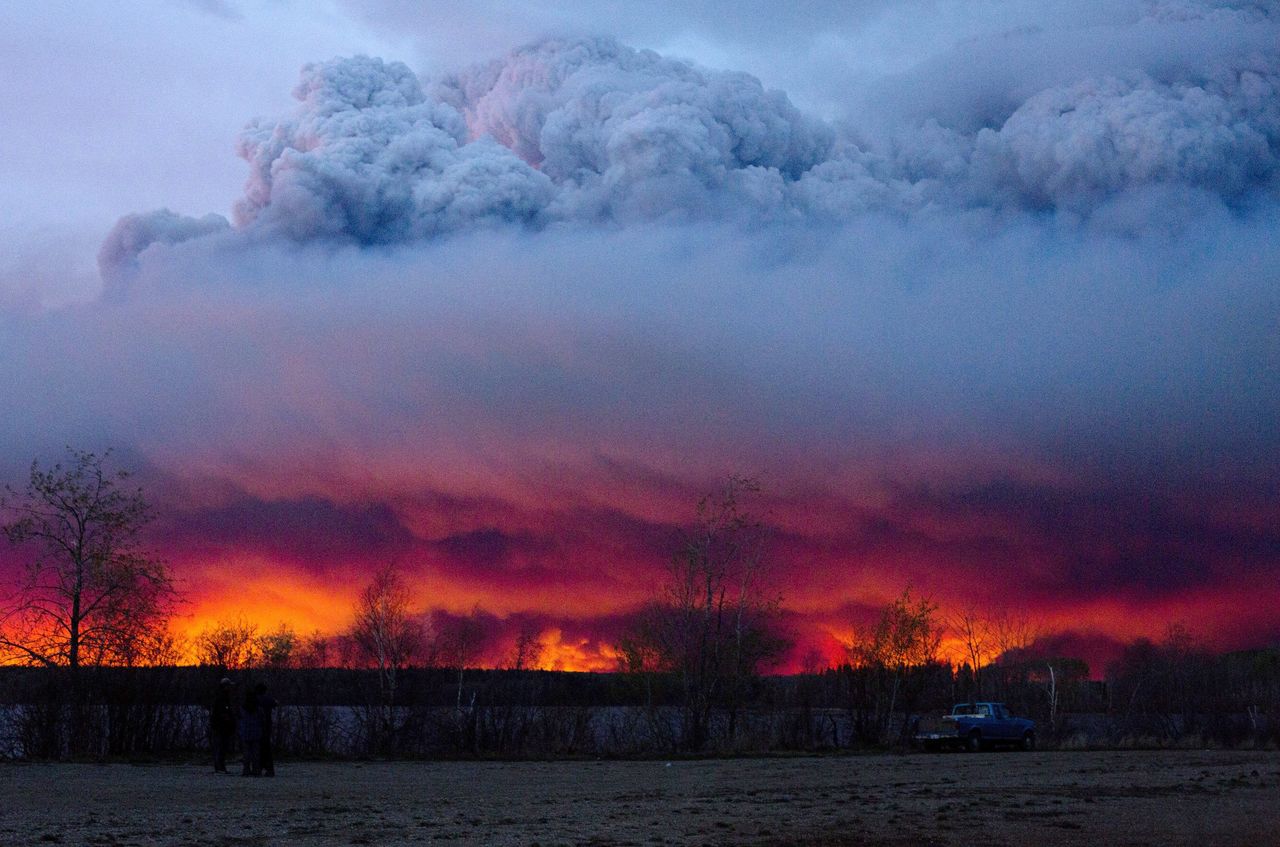FORT MCMURRAY, Alberta — Raging wildfires in the Canadian province of Alberta have moved south, forcing three more communities to evacuate and an emergency operations center to move again — taking it far from the devastated oil sands city of Fort McMurray.
The Alberta government said Thursday that more than 1,110 firefighters, 145 helicopters, 138 pieces of heavy equipment and 22 air tankers were fighting a total of 49 wildfires, with seven considered out of control. Officials said conditions remained extreme and that strong winds were helping spread the fire.
The communities of Anzac, Gregoire Lake Estates and Fort McMurray First Nation, an aboriginal reservation, were evacuated overnight after the wildfires moved south. The fire has already forced the evacuation of more than 80,000 people and torched 1,600 homes and other buildings in Fort McMurray. There have been no injuries or death from the fires. The province of Alberta declared a state of emergency.
“Homes have been destroyed. Neighborhoods have gone up in flames. The footage we’ve seen of cars racing down highways while fire races on all sides is nothing short of terrifying,” Prime Minister Justin Trudeau said in Parliament on Thursday, calling it “the largest fire evacuation in Alberta’s history.”
Trudeau called on all Canadians “to support our friends and neighbors at this difficult time,” saying the federal government will match individual charitable donations to the Red Cross.
Unseasonably hot temperatures combined with dry conditions have transformed the boreal forest in much of Alberta into a tinder box. Fort McMurray is surrounded by wilderness in the heart of Canada’s oil sands — the third largest reserves of oil in the world behind Saudi Arabia and Venezuela.
The emergency operations center relocated southward for the second time in a day and is now in Lac La Biche, Alberta — about 175 miles south of Fort McMurray. In the early hours Thursday, weary evacuees from Fort McMurray were sitting on buses headed for the provincial capital of Edmonton after being forced out of their temporary shelter in nearby Anzac.
They had arrived in Anzac late Tuesday after being evacuated from their homes 30 miles north in Fort McMurray. On Wednesday morning, the Anzac recreational center was a bustling hub filled with people, tables of food and rows of cots. By that evening, it was eerily silent and empty. North-bound traffic on the main highway to Fort McMurray was restricted to emergency vehicles and other essential travel. Emergency fuel stations have been set up on the highway.
There was some good news — Fort McMurray’s water treatment plant was saved, and Scott Long of Alberta Emergency said the downtown core was being held “through some Herculean efforts” of firefighters. Alberta Premier Rachel Notley flew up to survey the situation firsthand, and tweeted “heartbreaking” pictures of the fire from above. As high as her helicopter was, she said the plumes of smoke reached even higher.
About 10,000 evacuees moved north, where oil sands work camps were being pressed into service to house people. But the bulk of the evacuees fled south to Edmonton and elsewhere, and officials said they eventually would like to move everyone south.
The fire has dealt a blow to the region’s crude production, with companies curtailing production or stopping it altogether. Nexen shut down its Long Lake facility, just south of Anzac, to ensure the safety of staff in the event that the fire reaches the site.
Shell said it has shut down production at its Shell Albian Sands mining operations— about 60 miles north of Fort McMurray — so it can focus on getting families out of the region. Suncor, the largest oil sands operator, said it is reducing production at its regional facility about 15 miles north of the city. Syncrude also reduced the number of people working at its Mildred Lake mine.
Talk to us
> Give us your news tips.
> Send us a letter to the editor.
> More Herald contact information.

























